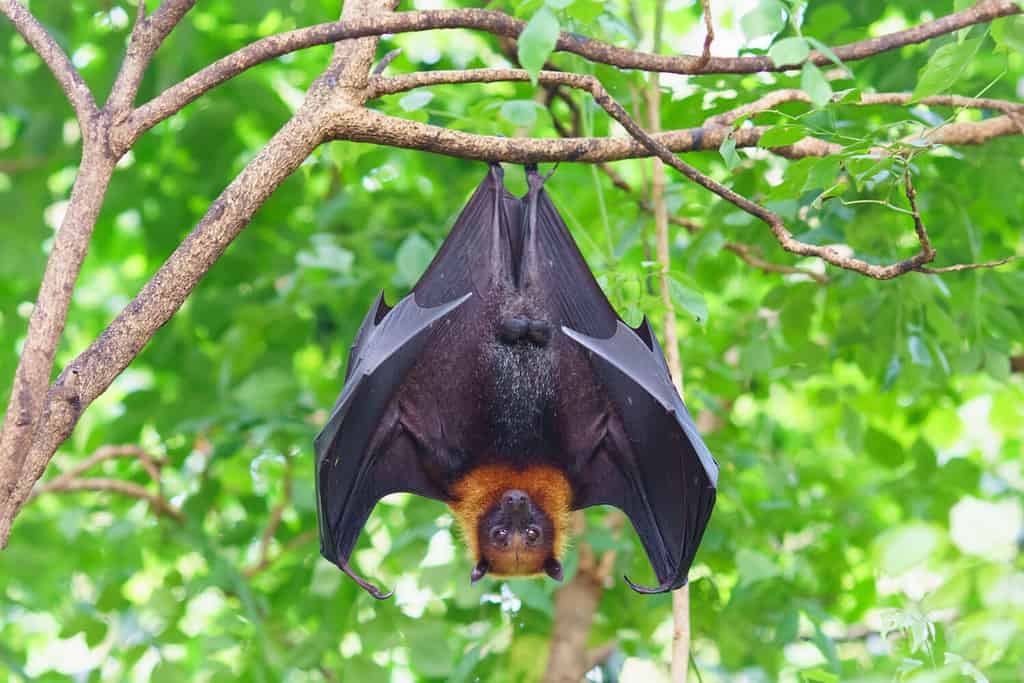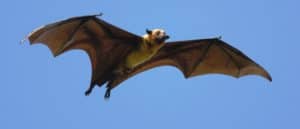
Like sloths, bats hang upside down to sleep.
©iStock.com/nymphoenix
Bats are one of the largest groups of mammals on earth, with more than 1300 species. They are unique among mammals as they are the only mammals capable of true flight — that is, they can actually propel themselves through the air unlike other mammals, such as sugar gliders and flying squirrels, who can only glide. Another unique trait most bat species have in common is that they sleep and otherwise rest while hanging upside down. Few other animals ever hang upside down, so many may wonder why bats do it.
Why do bats hang upside down?
One reason bats hang upside down is because their back legs are very short, with light, delicate bones. It is believed that bats’ legs evolved this way to make the bats light enough to fly. Since bats do not have hollow bones like birds do, they need to reduce their weight in other ways. Despite the benefits small legs have for flying, they cannot support the bat’s weight, leaving bats unable to stand, walk, or run on their back legs (although some species can crawl around using their wings as front legs). This makes hanging upside down the most efficient way for them to rest.
Hanging upside down has other benefits for bats as well. It provides the most efficient way for them to take off, since it allows them to drop directly into flight, eliminating the need for a running start. Hanging upside down also allows bats to sleep in hard-to-reach places, such as caves and hollow trees, which protects them from predators.
How long can bats hang upside down?

Bats’ feet can lock into place, keeping them suspended upside down.
©jekjob/Shutterstock.com
Bats have special tendons in their back feet that lock their toes in place. This allows them to hang upside down without expending any energy. Because of this, they can hang upside down for a long time. Perhaps the longest time bats spend hanging is during hibernation. Some kinds of bats that live in parts of the world with cold winters will hibernate through the winter to save energy, since their main food source, insects, is not available. These bats spend hibernation hanging upside down in sheltered areas such as caves, hollow trees, or crevasses in rocks. Some species of bats hibernate for more than six months. The tendons in bats’ feet keep them suspended during hibernation, and they are so secure that bats can remain hanging even after death.
Why doesn’t blood rush to a bat’s head?
When humans hang upside down, we often feel dizzy or nauseous as a result of blood rushing to our heads. Bats do not have this problem. One reason for this is that most types of bats are very small. This means they have much less blood than humans do, so it is not affected as much by gravity. Bats also have valves in their arteries to keep excess blood out of their brains. Humans have similar valves in our arteries to prevent blood from pooling in our feet, but in bats, these valves are upside down, keeping blood out of their heads instead.
The photo featured at the top of this post is © iStock.com/BirdHunter591
Thank you for reading! Have some feedback for us? Contact the AZ Animals editorial team.







